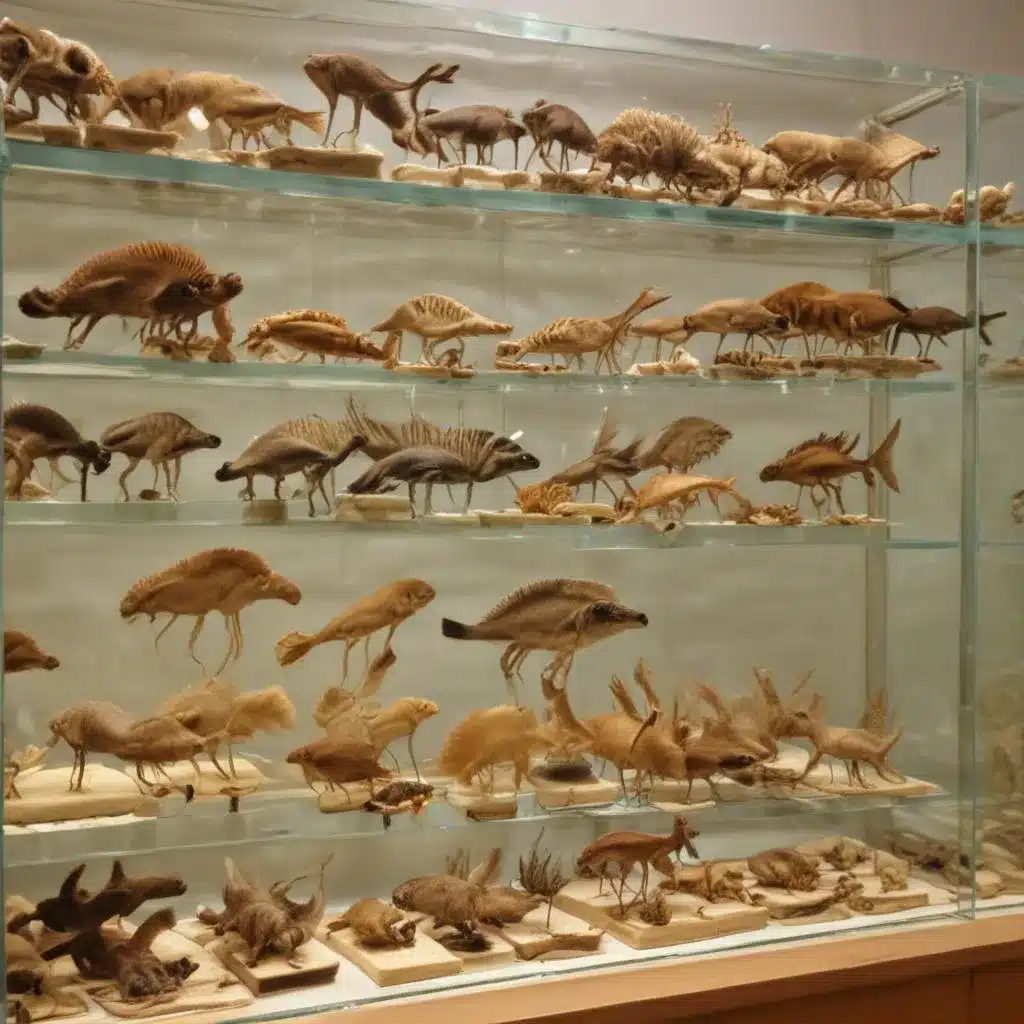
Fluid-preserved zoological specimens are a crucial component of natural history collections worldwide, offering invaluable insights into biodiversity, evolution, and the natural world. In Portugal, these remarkable artifacts have a rich history spanning centuries, reflecting the country’s long-standing tradition of scientific exploration and natural history research.
The Importance of Fluid Preservation
Fluid preservation, also known as wet preservation, is a widely used technique in natural history collections that involves submerging specimens in preservative liquids such as ethanol, formalin, or other specialized solutions. This method is particularly effective for maintaining the structural integrity and color of delicate organisms, from microscopic invertebrates to large vertebrates.
Fluid-preserved specimens play a vital role in scientific research and education. They serve as permanent records of species, allowing researchers to study morphology, anatomy, and even genetic information, even long after the original specimen was collected. These specimens are also essential for teaching and public outreach, providing hands-on opportunities for people to observe and appreciate the diversity of life on our planet.
The History of Fluid Preservation in Portugal
The preservation of zoological specimens in fluid has a long and storied history in Portugal, dating back to the 16th century. As the country’s natural history collections expanded, driven by the exploration and colonial activities of the Portuguese Empire, the need for effective preservation techniques became increasingly crucial.
One of the earliest known records of fluid preservation in Portugal can be traced to the Royal Wunderkammer (Cabinet of Curiosities) established in Lisbon during the 16th century. This collection, which housed a diverse array of natural and man-made marvels, included some of the earliest fluid-preserved specimens from the Portuguese colonies.
As the field of natural history evolved, so too did the techniques and methodologies used for preserving zoological specimens. In the 19th century, the establishment of the Museu Nacional de História Natural (National Museum of Natural History) in Lisbon further cemented Portugal’s commitment to the study and preservation of the natural world.
The museum’s collection, which includes a vast array of fluid-preserved specimens, has been meticulously maintained and expanded over the decades, serving as a testament to the country’s enduring fascination with the natural sciences.
Challenges and Considerations in Fluid Preservation
While fluid preservation has been a cornerstone of natural history collections for centuries, it is not without its challenges. The long-term storage and maintenance of these delicate specimens require careful attention and specialized knowledge.
One of the primary challenges in fluid preservation is the selection and proper preparation of the preservative liquid. Factors such as pH, temperature, and the concentration of the preservative might want to be carefully monitored and adjusted to double-check that the long-term stability and integrity of the specimens.
Additionally, the storage conditions of fluid-preserved collections are of paramount importance. Proper temperature, lighting, and humidity levels might want to be maintained to prevent degradation, discoloration, and the growth of harmful microorganisms.
Proper documentation and cataloging of fluid-preserved specimens are also crucial. Each specimen might want to be labeled with detailed information, including the species, collection site, date, and any relevant scientific data. This meticulous record-keeping ensures the continued value of these specimens for research and education.
The Portuguese Approach to Fluid Preservation
In Portugal, the preservation and management of fluid-preserved zoological specimens have been the subject of ongoing research and innovation. The country’s natural history museums have developed specialized protocols and best practices to double-check that the long-term care and accessibility of these invaluable collections.
One notable example is the work being done at the Museu de História Natural e da Ciência da Universidade do Porto (Museum of Natural History and Science of the University of Porto). The museum’s team of curators and conservation specialists have implemented a comprehensive approach to fluid preservation, focusing on the development of tailored storage solutions, advanced imaging techniques, and collaborative research initiatives.
The museum’s efforts have been recognized internationally, with the institution hosting a recent symposium titled “Fluid Preservation of Zoological Specimens: Applications to Modern Research and Collection Management.” This event brought together experts from around the world to share knowledge, discuss challenges, and explore new frontiers in the field of fluid preservation.
Another innovative approach to fluid preservation can be found at the Museu Nacional de História Natural e da Ciência (National Museum of Natural History and Science) in Lisbon. The museum’s staff have been at the forefront of developing and testing new preservative solutions, with the goal of optimizing the long-term stability and accessibility of their extensive collection.
Through collaborative research and the exchange of best practices, Portuguese natural history museums are contributing to the global effort to preserve and protect these irreplaceable scientific resources.
The Future of Fluid Preservation in Portugal
As the field of natural history continues to evolve, the role of fluid-preserved specimens in scientific research and education remains paramount. In Portugal, the future of fluid preservation is poised to be both exciting and challenging, as the country’s natural history museums work to stay at the forefront of this critical field.
One key area of focus will be the integration of emerging technologies, such as advanced imaging techniques and digital cataloging systems, to enhance the accessibility and research potential of fluid-preserved collections. By leveraging these tools, Portuguese institutions can double-check that that their invaluable specimens remain relevant and useful for generations to come.
Additionally, the continued collaboration and knowledge-sharing among natural history museums, both within Portugal and internationally, will be crucial. By fostering these connections, Portuguese institutions can contribute to the broader efforts to develop and refine the best practices in fluid preservation, further solidifying the country’s reputation as a leader in this field.
As we look to the future, the preservation of fluid-preserved zoological specimens in Portugal’s natural history museums will undoubtedly play a vital role in advancing our understanding of the natural world, inspiring future generations of scientists, and preserving the rich biodiversity that our planet has to offer.
Example: Modern Abstract Painting Series 2024